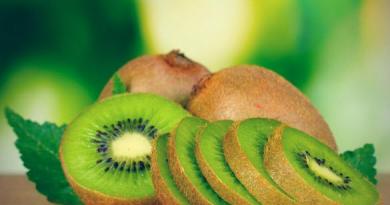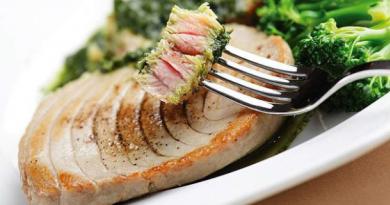Oil from cocoa beans began to be extracted in 1828, when the Dutch inventor Van Heyten first proposed a special press. Cocoa butter is not liquid, but hard and brittle, it has a pleasant smell of chocolate, melts at a temperature of 37 degrees - it melts in your mouth, not in your hands.
The more cocoa butter in chocolate, and not its substitutes, the more tender and tastier it turns out. But cocoa butter is valued not only for its taste and smell, but also for certain beneficial properties.
Useful properties of cocoa butter, its use and contraindications - that's what we would like to tell you about today. We hope you find it interesting.
Cocoa butter - useful properties and contraindications
The chemical composition of cocoa butter is fatty acids and triglycerides - the essential oils of glycerin. In turn, among fatty acids, 3% are polyunsaturated fatty acids, 35% are monounsaturated fatty acids, and the rest are saturated fats. Cocoa butter contains vitamins - A, group B, E and C, melaxontin, caffeine and mineral salts - potassium, calcium, manganese, magnesium, iron, zinc, phosphorus, tannins and tannins. The composition of cocoa butter determines its medicinal and beneficial properties when used correctly.
As you know, vitamins E and C are powerful natural antioxidants that neutralize free radicals and promote their removal from the body. In addition, vitamin E contributes to active collagen production when applied and moisturizes the skin, making it more elastic and fine lines are visibly reduced.
Cocoa butter contains a large amount of oleic acid, which also helps to retain moisture in the skin and restores its surface protective layer. That is why, due to its beneficial properties, cocoa butter is often included in cosmetics for the care of dry and flaky or irritated skin. Palmitic acid, which is also found in cocoa butter, when applied, promotes faster penetration of active ingredients into the skin. Special substances - polyphenols prevent the development of allergic reactions, due to the fact that they suppress the production of IgE immunoglobulin in the skin. Therefore, the properties of cocoa butter are also used in the treatment of allergic dermatitis.
In addition to the beneficial properties of cocoa butter for the skin, cocoa butter has enveloping, analgesic, antitussive, anti-inflammatory, regenerating and wound healing properties.
Therefore, it can be used, for example, for the production of various medicinal ointments or suppositories. It is also known that the beneficial properties of cocoa butter help with colds to cope with a severe dry cough. When taken orally, cocoa butter supports the body's immune system, enriches it with useful minerals and vitamins, and therefore it can be used as an adjunct in the prevention or treatment of many diseases.
Cocoa butter - contraindications for use
The main contraindication to the use of the properties of cocoa butter is an allergy to the product, which cocoa butter can cause. It is also not recommended to take it by mouth if you are overweight or if you have insomnia.
Cocoa butter - properties and applications in cosmetology
Cocoa butter is a component of many cosmetic products intended for skin care of the face, neck and décolleté, and is also used to care for the delicate skin of the lips or hands precisely because of its beneficial properties. Since the use of the properties of cocoa butter promotes skin regeneration, it is a component of many means for healing abrasions, wounds and scratches, and is also part of anti-aging cosmetics to smooth out fine superficial wrinkles, especially skin care products around the eyes.
The protective beneficial properties of cocoa butter allow it to be used to protect the skin from exposure to low temperatures in winter. Cocoa butter is often used for body wraps in spas due to its properties. The emollient and lubricating properties of cocoa butter are used in many face and body massage products. The caffeine contained in cocoa butter has an anti-cellulite effect, it prevents the appearance of stretch marks on the skin and makes it more elastic.
The properties of cocoa butter increase the synthesis of melatonin in the skin, which is why this oil is often added to tanning cosmetics. However, it does not protect the skin from harmful UV radiation. When preparing homemade skin care creams, you need to remember that cocoa butter should only be applied to the skin in combination with other oils, as it greatly clogs the pores, preventing the skin from breathing. For the same reason, it is not recommended to use the properties of cocoa butter for the care of oily or combination skin. When making cosmetics at home, it is recommended to add cocoa butter to it by no more than 5%.
In its pure form, cocoa butter can be applied to dry, cracked skin on the knees, heels, and elbows. To do this, you need to warm up well and grind cocoa butter in your hands, and then apply it to the problem area. As a rule, the beneficial properties of cocoa butter are used as a structural component for the manufacture of homemade balms, candles or lipstick. Also, cocoa butter, due to its binding effect, can be used in the manufacture of soaps or bath bombs. In this case, it is added to the main components in an amount not exceeding 15%.
Using the properties of cocoa butter for facial care - recipes

Face mask for aging skin: take 1 teaspoon of cocoa butter and melt it in a water bath. Finely chop fresh parsley, mix it with melted butter and apply to previously cleansed skin. Leave the mask based on the beneficial properties of cocoa butter for 20 minutes, and then rinse with warm water.
Mask for dry skin: For dry skin and severe wrinkles, prepare the following mask. You will need:
- cocoa butter - 1 teaspoon;
- liquid honey - 1 teaspoon;
- carrot juice - 1 teaspoon;
- egg yolk - 1 pc.;
- lemon juice - 10 drops.
Mix all the ingredients well until completely homogeneous, then apply on pre-cleansed skin for 15 minutes and rinse with warm water. At the end of the procedure, it is recommended to additionally wipe the skin with an ice cube.
Mask for any skin: take 1 teaspoon of melted cocoa butter, juice of any vegetable or fruit, milk, mix and apply on cleansed face. Wash off the mask with cool water after 15 minutes.
The properties of cocoa butter can be used to heal the cracks that sometimes appear in the corners of the mouth, as well as a protective lip balm in cold winters.
Application of the properties of cocoa butter in traditional medicine - recipes
- For constipation and hemorrhoids, it is recommended to take 1 teaspoon of cocoa butter orally before going to bed in the evening. For hemorrhoids, it is recommended to inject 1 teaspoon of cocoa butter into the rectum after each bowel movement.
- With cervical erosion, it is recommended to make tampons from a mixture of cocoa butter melted in a water bath with sea buckthorn oil. For 1 teaspoon of cocoa butter, you need to take 10 drops of sea buckthorn oil. The course of treatment based on the beneficial properties of cocoa butter is 2-3 weeks.
- For colds, tonsillitis, tuberculosis or pneumonia, you need to mix propolis and cocoa butter in a ratio of 1:10 and take 1 teaspoon daily orally three times a day between meals.
- To relieve a dry cough, such as bronchitis, take cocoa butter with hot milk at the rate of half a teaspoon of cocoa butter to half a glass of milk. Also, with bronchitis, it is recommended to rub cocoa butter on the chest. Useful properties of cocoa butter will help in this case.
- With atherosclerosis, you need to take half a teaspoon of cocoa butter in the morning and evening 20 minutes before meals.
- In case of inflammation of the prostate, propolis is mixed with cocoa butter in a ratio of 1: 3 and used as suppositories.
Useful properties of cocoa butter for the body: video



